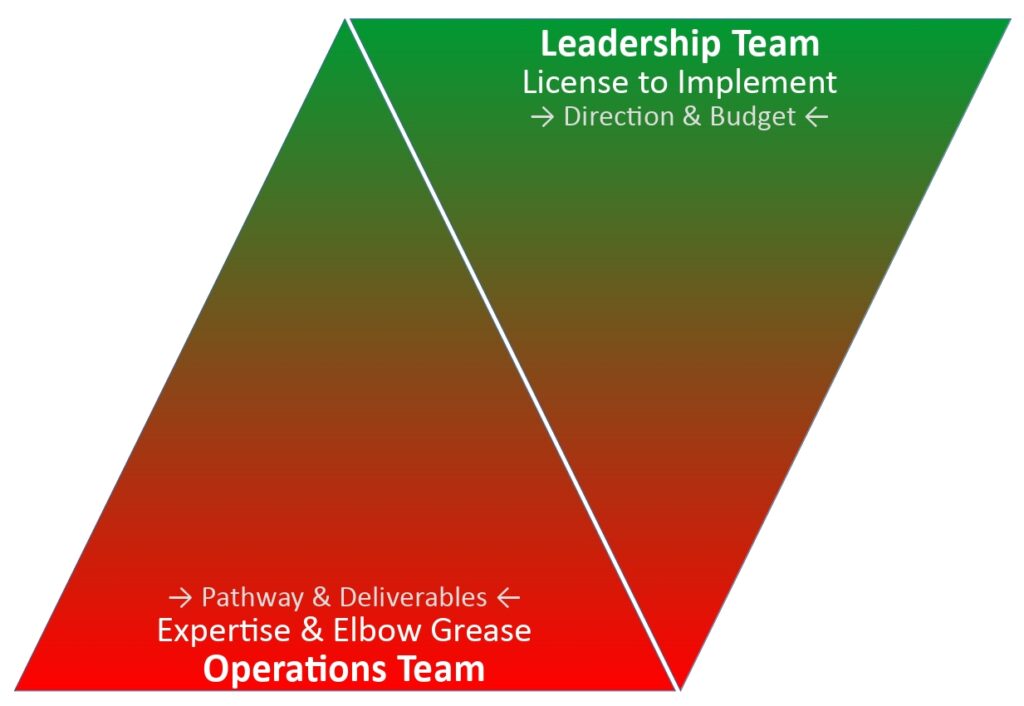
‘The Boss prioritises only ever sales!’
‘The conversation is always about cost, not about impact!’
OR
‘Employees just don’t get moving!’
‘They are all over the place – the final impact is minimal!’
Do these statements remind you of your company’s challenges? You’re not alone – it’s a situation that is much more common that it should, or indeed need, be. Because if each player on the corporate chess board would do his or her job properly this would be a none-topic.
Just that they don’t.
Instead it is common that a company busies itself, from the C-suite to the receptionist, with a mutual blame game. Because it means – still, unfortunately – swimming against the current, to be accountable the role each of us plays in order to ‘get things done’ – also and importantly in our professional roles.
But what would their respective, and complementary roles be?
- Leadership Team:
They are the ones that have to ‘open the door’. In other words: they are accountable to set the strategy and the mid- to long term goals and commitment. Prioritise those goals, finding and allocating budget and resources is also within their responsibility.
→ This will, of course, happen in consultation of the operations teams and – if needed – outside experts. - Operations Team:
They are accountable for putting in the elbow grease and run towards the goals set out, while using the resources they have been given, by their leadership team. Here lies the hands-on expertise and implementation responsibility.
→ Progress and hurdles, if critical, are fed back to leadership team so as to influence possibly required strategic updates of goals.
The following figure illustrates the complementarity of Leadership Team and Operational Team in terms of responsibility and accountability.

Given the type of statements mentioned in the introduction: What does that tell us about the state-of-play within many companies?
- Leadership Teams and Operational Teams are not sufficiently aligned, and not necessarily consciously aware of their complementary roles in rolling out sustainability.
- If one of the teams – be it Leadership or be it Operations – is not pitching in and being accountable for the part they have to play, any efforts will at best dabble along without significant progress, and at worst just simply falter after having wasted money and resources.
- Personal
commitment and values matters, both in Leadership as much as in
Operations. Non-aligned personal value sets will undermine efforts.
This is most damaging in the early stages of strategy development,
but holds true throughout.
It once more hits home the relevance of hiring people with the right set of values and mindset – in addition to the right set of skills and expertise. - Steep power hierarchies. If not officially (corporate ladder) then in reality (dominant individuals). This can work out to the best sometime, but more often than not it slows down the process as ‘non-action’ is a way of intuitively protesting against large power imbalances in a company.
How to you go about remedying these issues?
Evidently the approach will depend on where the ‘problem’ is rooted. A lethargic leadership team will require other remediation measures than an equally lethargic operations team for example.
This said, there are a couple of approaches that work surprisingly well – above and beyond the mere fact that being clear on ‘where to go’ (strategy) is a necessity.
These approaches work well even in the face of single individuals as key hurdle (because they get found out along the way).
These approaches are:
- A governance approach across all levels, and most importantly at leadership level, that implements the fair process leadership framework.
- Serious games that bring teams together across corporate hierarchies and beyond individual technical expertise.

